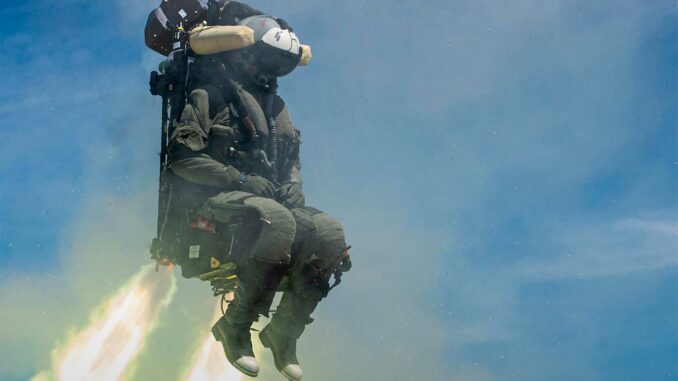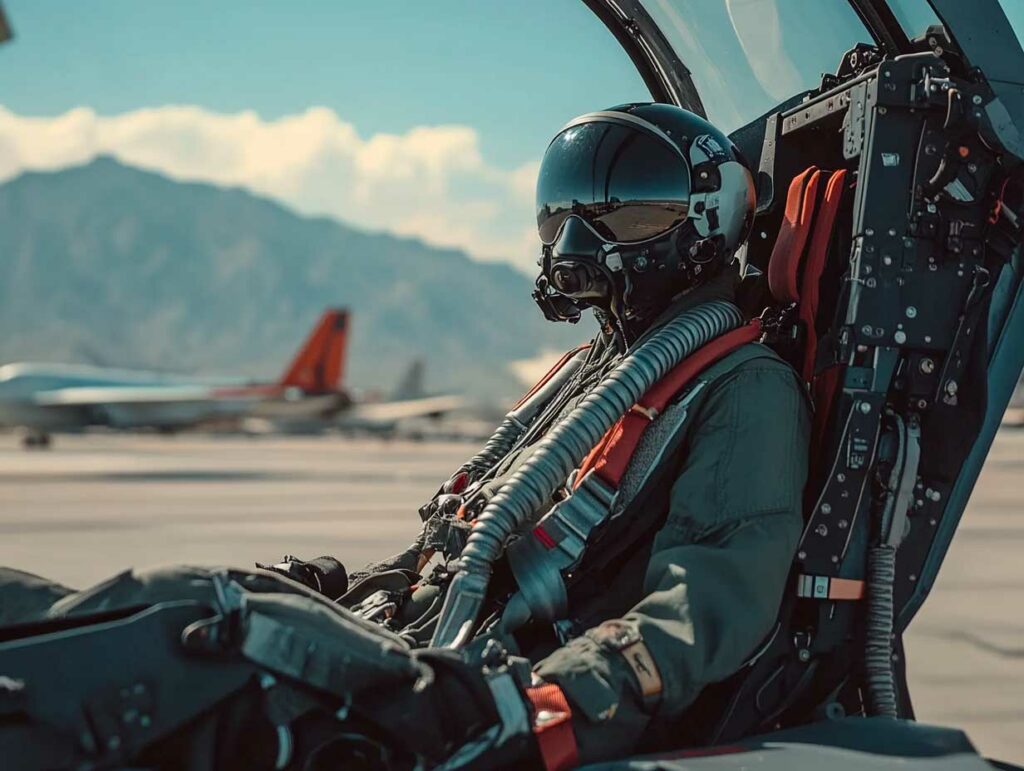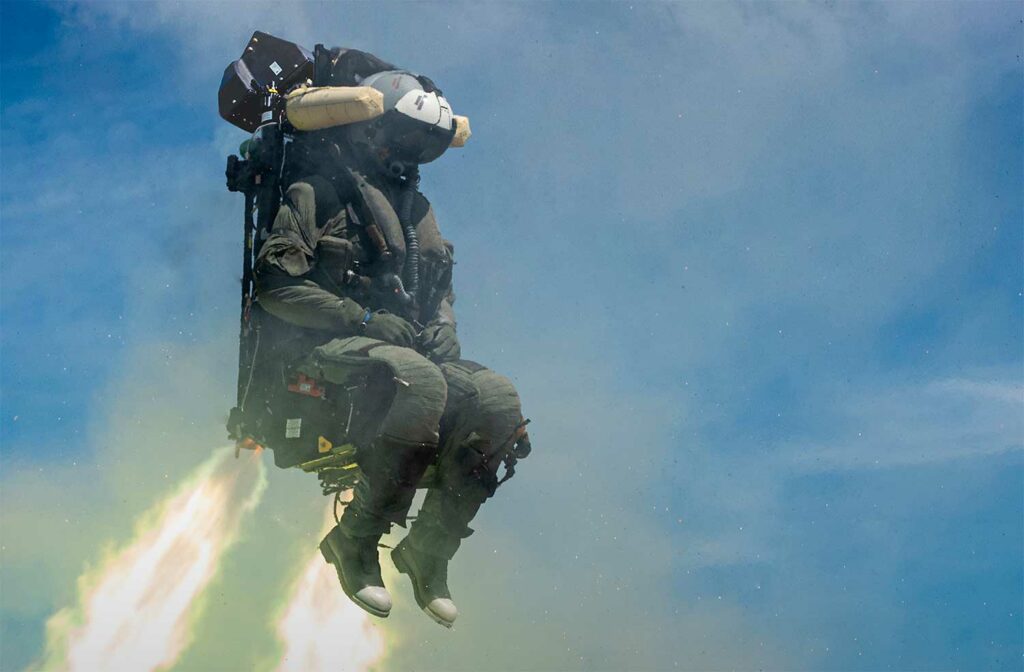
Discover Bernard Lynch’s role in the history of the ejection seat, an essential innovation for pilot survival.
Bernard Lynch was a key figure in the development of the ejection seat, a device that has saved the lives of countless pilots. In the mid-20th century, military aviation was evolving rapidly, making pilot safety more critical than ever. Lynch, as a volunteer tester of these systems, made significant contributions to improving in-flight evacuation methods.
The ejection seat allows pilots to leave their aircraft in an emergency. Thanks to rigorous testing by Lynch and his colleagues, these systems were perfected to ensure maximum survival in critical conditions. This innovation not only improved safety in combat, but also influenced training programs, such as survival courses where pilots learn how to manage an ejection and survive in the forest or in hostile environments.
Understanding Bernard Lynch’s career and the history of the ejection seat provides important insight into the evolution of aviation survival techniques.

Lynch and the ejection seat
Bernard Lynch and the history of the ejection seat
Bernard Lynch, who was an engineer at Martin-Baker, played a crucial role in the development of the ejection seat in the mid-20th century. This device, essential for the safety of military pilots, was extensively tested to meet the growing need for survival in aviation. The development of this system came at a time when aircraft were reaching higher speeds, making manual evacuation without specialized equipment difficult. This need led to the creation of a seat capable of propelling a pilot safely out of the aircraft.
Background of military aviation and the need for ejection seats
After World War II, the need to design an emergency exit for aircraft intensified as aircraft speeds increased. Bernard Lynch conducted the first flight test of an ejection seat in 1946, propelled at approximately 515 km/h at an altitude of 2,400 meters in a Gloster Meteor. He initiated ejection by lowering a face shield and manually deployed his parachute for a safe landing. This test demonstrated the reliability of the system and allowed Lynch to continue with more than thirty tests, sometimes at altitudes of 9,100 meters and speeds of 676 km/h.
Ejection seats use explosive charges or rocket engines to propel the pilot out of the aircraft. In early versions, the explosive charge was limited to prevent bodily injury, particularly to the spine. Later models, such as those used in supersonic aircraft, were equipped with thrusters to reach safe altitudes, even during ejections from the ground.
The evolution of ejection seats has allowed pilots to maximize their chances of survival, even in the most difficult conditions, making them indispensable for modern aviation safety.
Historical context
The challenges of aviation in the mid-20th century
From the 1940s onwards, fighter planes reached ever higher speeds, complicating emergency evacuation procedures. Before the introduction of ejection seats, pilots had to exit their aircraft manually. This posed considerable risks, particularly due to the force of air currents and potential impacts with parts of the aircraft. At speeds exceeding 500 km/h, this method became impractical and dangerous, as pilots could be injured or unable to escape in time.
With the increase in aircraft performance, pilots are exposed to gravitational forces that make it difficult for them to escape in an emergency. These forces, known as G-forces, can make movement difficult or even impossible. For example, during a rapid dive, pilots can experience forces of up to 9 G, preventing them from acting quickly to leave the aircraft.
Risks faced by pilots on missions
Reconnaissance or combat missions increase the risk for pilots, as they are often on the front line and exposed to enemy fire. In the event of damage to the aircraft, pilots risk losing control at low or high altitudes, making evacuation without assistance even more difficult. Early attempts at ejection seats included rudimentary spring-based systems, but these proved ineffective at high altitudes.
To improve survival, the first ejection seats designed by James Martin used an explosive charge to propel the seat and pilot away from the aircraft. Later models incorporated more powerful thrusters to enable ejection at speeds of up to 700 knots (1,300 km/h). This development increased pilots’ chances of survival and was a crucial step in improving military flight safety.
Bernard Lynch’s contributions
His role in ejection seat testing
Bernard Lynch, an engineer at Martin-Baker, was a pioneer in the field of ejection seat testing. In 1946, he conducted the first flight tests to test safety systems. On July 24, 1946, he was the first person to eject from a Gloster Meteor, at approximately 515 km/h and an altitude of 2,400 meters. Lynch used an ejection device that involved a face shield to activate the mechanism and a manual parachute for a safe landing.
As a volunteer for such risky tests, Lynch contributed to the optimization of ejection seats through trials at increasing speeds and altitudes. For example, in 1947, he successfully ejected at a speed of 676 km/h and an altitude of 3,650 meters. His work made it possible to adjust the power of the explosive charges used, while taking into account human physiological limits, such as G-force tolerance.
Technical advances achieved through his commitment
Lynch’s tests led to several improvements to the ejection system. Initially, Martin-Baker’s ejection seat worked using explosive cartridges, which propelled the seat out of the aircraft. As aircraft performance improved, rocket engines were added to provide more powerful propulsion and enable safe ejection even at altitudes of 9,000 meters. This technology was quickly adopted by many countries and became the standard for modern military aircraft.
Lynch’s work also contributed to reducing the risks associated with ground ejection. Tests led to the development of seats capable of activating from zero altitude, ensuring the pilot’s safety even on the ground. These technical improvements significantly enhanced the safety of pilots on missions and were incorporated into combat aircraft, improving survival rates in emergencies.
The impact of the ejection seat on pilot survival
Improved chances of survival in the event of an incident
The ejection seat has had a significant effect on the survival of military pilots. Before its introduction, the survival rate in flight emergencies was low. Pilots often had to eject manually from their cockpits, a task complicated by the speed of the aircraft and environmental conditions. With ejection seats, pilots can leave the aircraft quickly and at high speeds, sometimes exceeding 1,300 km/h. Early models used explosive charges, but today’s seats are often equipped with thrusters that increase the speed of ejection and allow for safe evacuation from the ground.
The development of ejection seats has also taken into account continuous improvements to minimize the impact on the pilot’s body. For example, the acceleration forces generated during ejection are now better controlled thanks to systems that modulate the force applied according to the situation. This reduces the risk of injuries, particularly to the spine, which were common in early models.
Testimonials from pilots who have benefited from this technology
Several pilots who have used ejection seats have shared their experiences of the system’s effectiveness. For example, during the Vietnam War, many pilots managed to escape from critical situations thanks to this technology. In some cases, pilots were safely recovered after ejecting into hostile territory, demonstrating the importance of this system in military missions.
The Martin-Baker Ejection Tie Club is a group of more than 7,500 pilots who have survived thanks to ejection seats produced by Martin-Baker. This figure illustrates the direct impact this innovation has had on the survival of military pilots over the decades. Testimonials indicate that the speed and reliability of the seats have saved lives in various military operations around the world.
Survival training and courses
The importance of survival courses for pilots
Military pilots are trained in survival skills to increase their chances in the event of ejection. This type of training, known as SERE (Survival, Evasion, Resistance, and Escape), covers a variety of scenarios, from survival in forest environments to escape in hostile territory. SERE allows pilots to familiarize themselves with essential equipment, such as life rafts and survival kits. They also learn practical techniques, such as signaling rescue teams and building shelters using available materials.
This type of training is often conducted in simulated and varied environments, such as forests, deserts, or bodies of water. For example, pilots regularly train to exit a parachute that has landed in water and deploy a raft. Approximately every three years, Air Force crews undergo water ejection training, which includes exercises in maneuvering under a parachute and extraction techniques from the water.

Techniques for surviving in the forest after ejection
After ejection, pilots may land in wooded terrain. Survival courses include modules on finding food, purifying water, and building shelters with branches and foliage. They also learn how to use ground signals to alert search aircraft, such as colored beacons or signal flares at night. In addition, specific training on edible plants and camouflage techniques enables pilots to remain inconspicuous while awaiting rescue.
The training also includes movement and orientation exercises to find a safe rendezvous point. Pilots practice night travel and learn to use compasses and maps to avoid dangerous areas and optimize their route to areas where they can be rescued.
Bernard Lynch’s legacy
Recognition of his work in aviation
Bernard Lynch played a key role in the development of modern ejection seats. His courage as a test pilot helped validate and improve aviation safety systems at a time when these technologies were still in their infancy. Lynch was awarded the British Empire Medal in 1948 in recognition of his contributions to military aviation. This distinction highlights his commitment to testing high-risk technologies, thereby helping to improve pilot safety around the world.
Influence on future safety developments
Bernard Lynch’s impact extends beyond the ejection seats of his era. The innovations tested by Lynch served as the basis for modern seat designs equipped with thrusters for ground ejections (zero-zero). These systems have saved thousands of lives, and Lynch’s legacy lives on through continued advances in aviation life-saving equipment. The Martin-Baker Company, which manufactures these seats, estimates that more than 7,500 pilots have been saved thanks to this technology.
Lynch’s work inspired further research into aviation safety, such as high-altitude survival systems and high-speed ejection techniques. These developments, made possible by his initial contributions, continue to benefit pilots in many countries today.
War Wings Daily is an independant magazine.